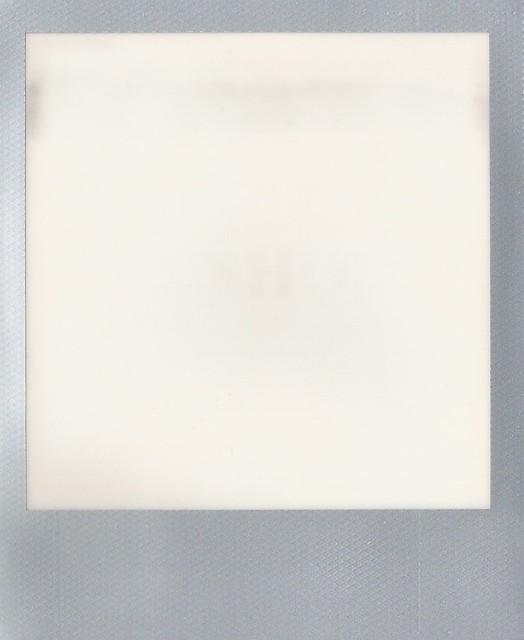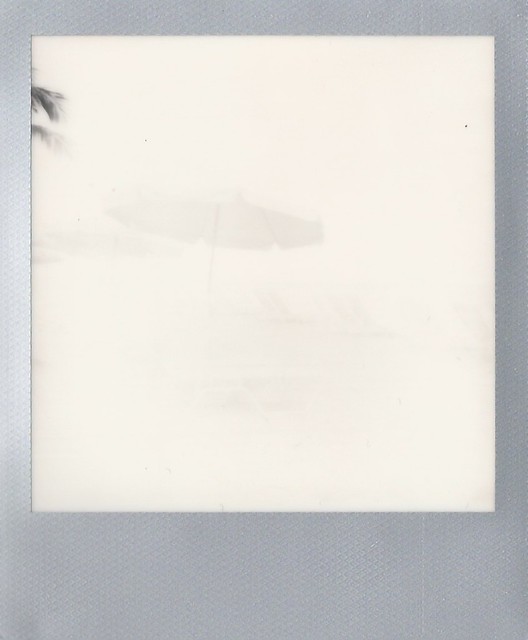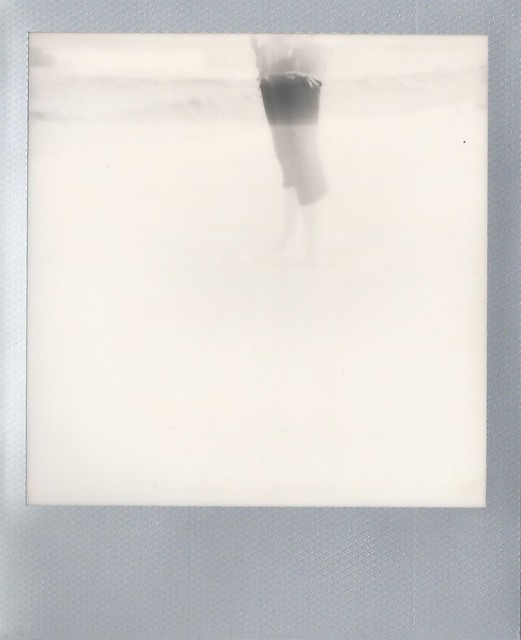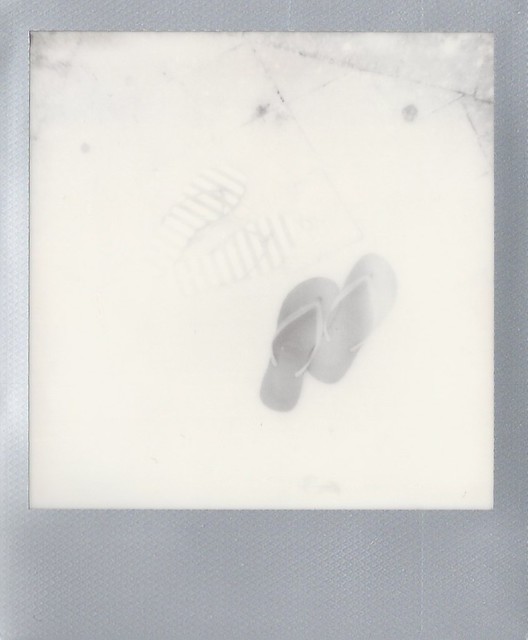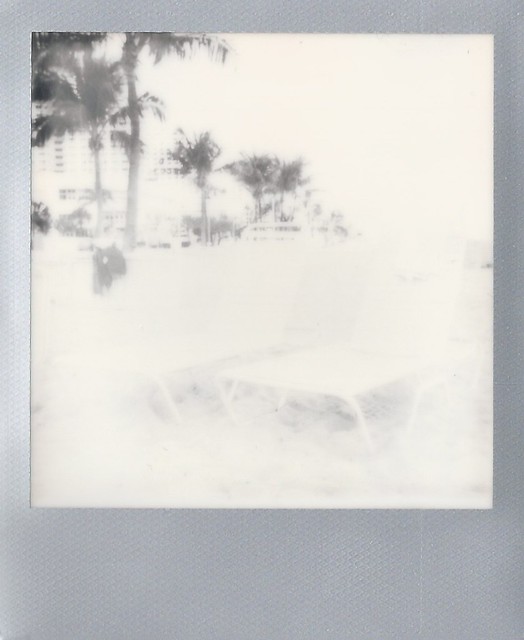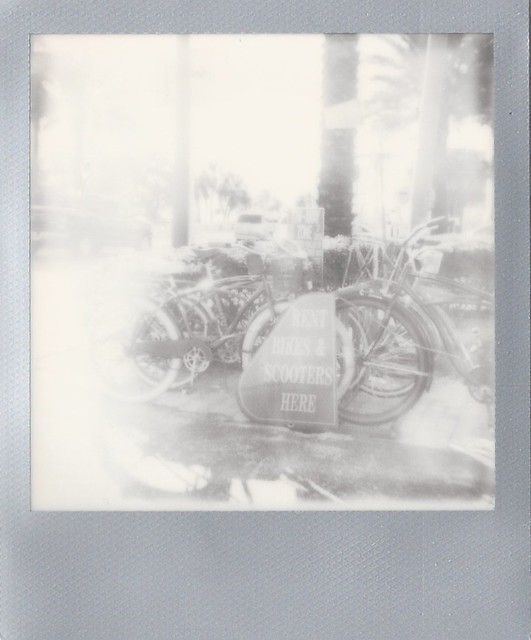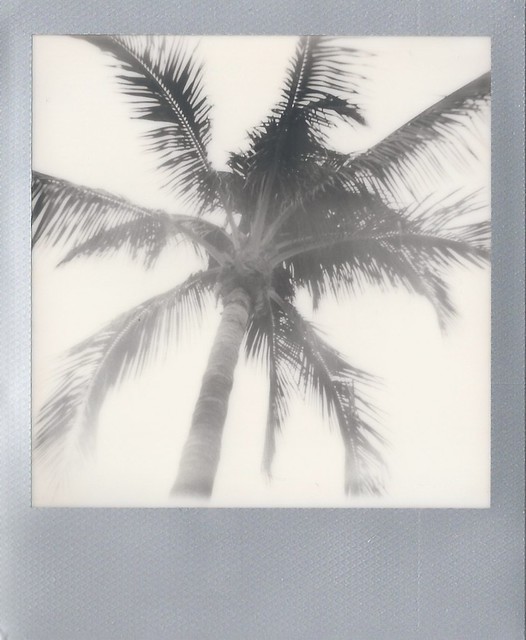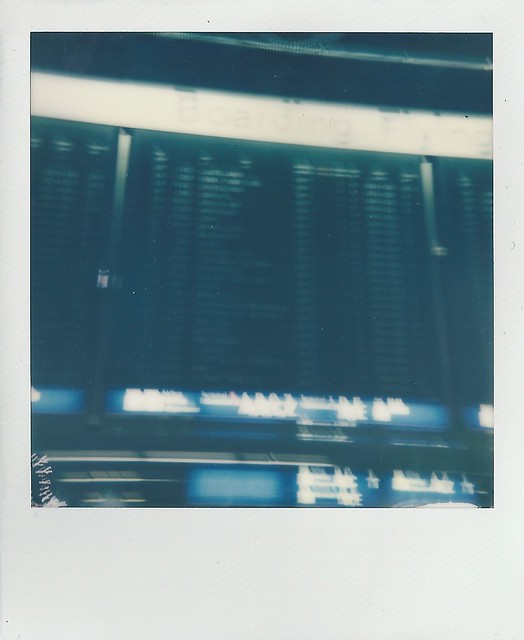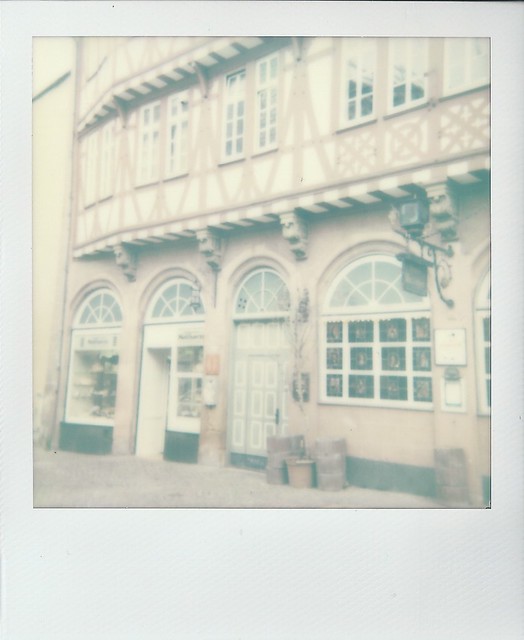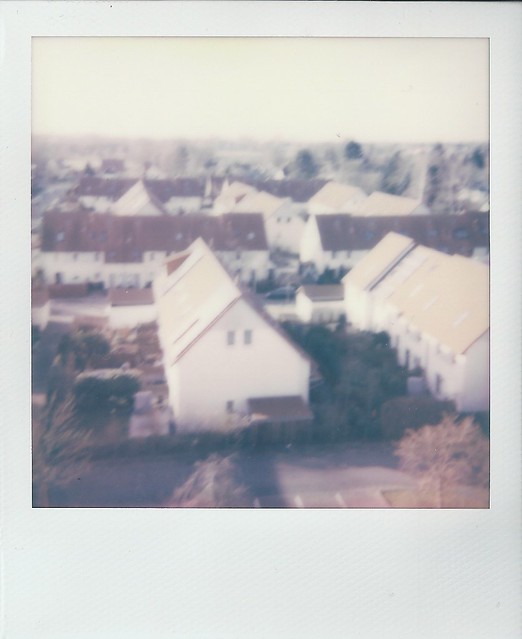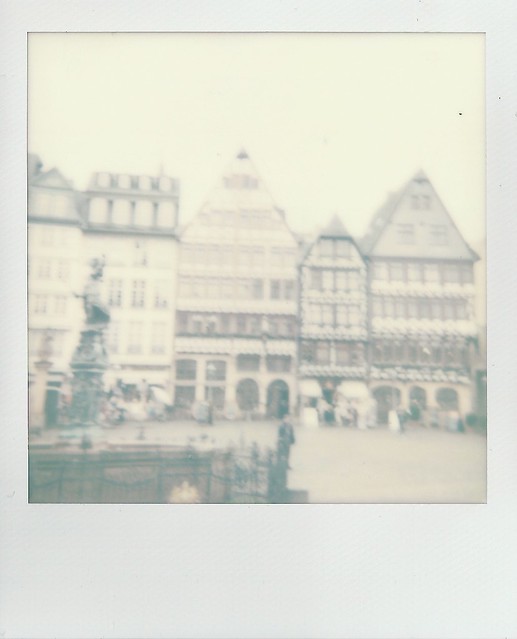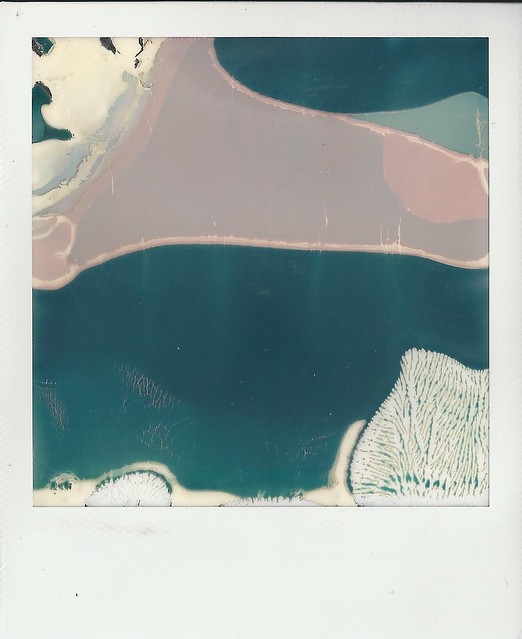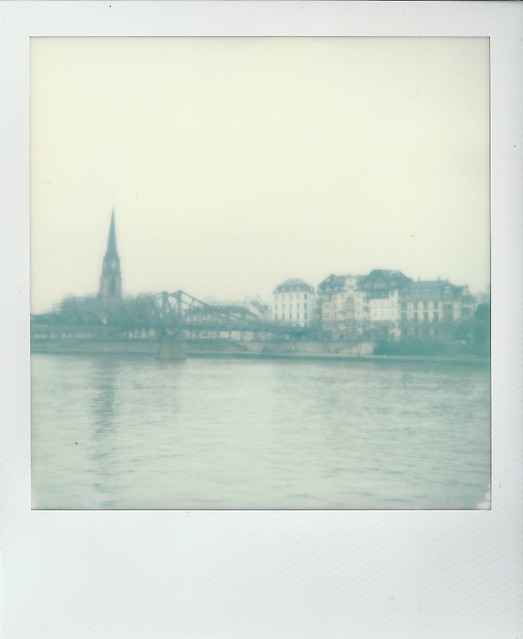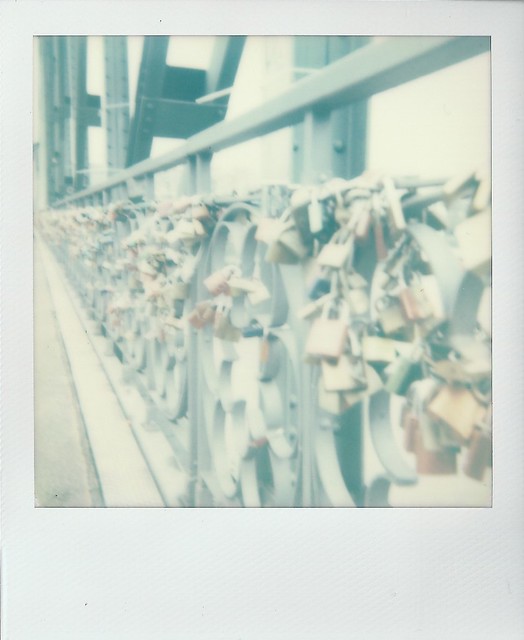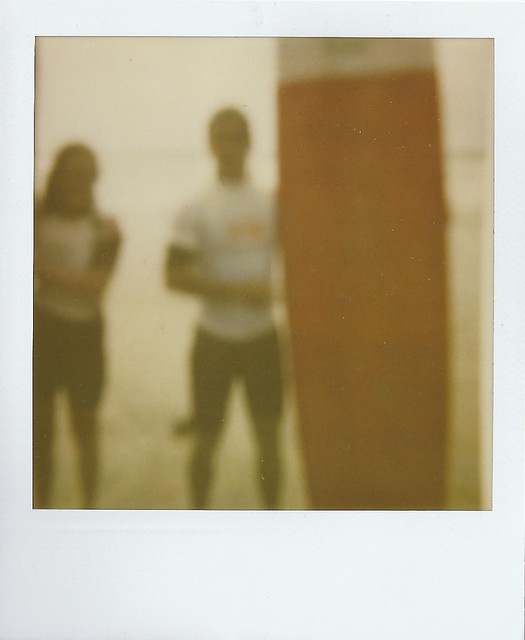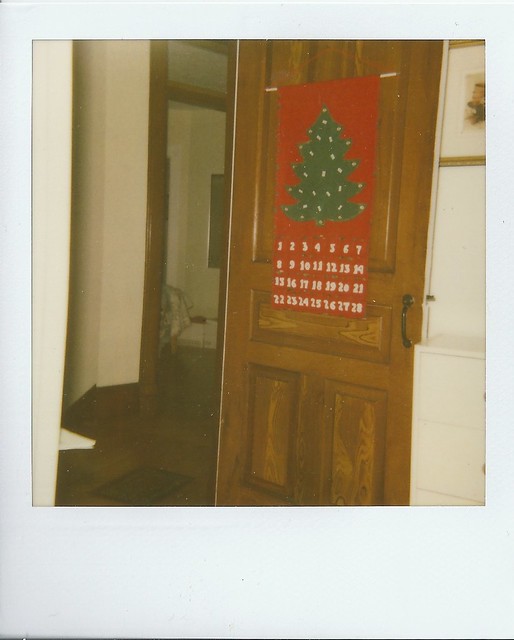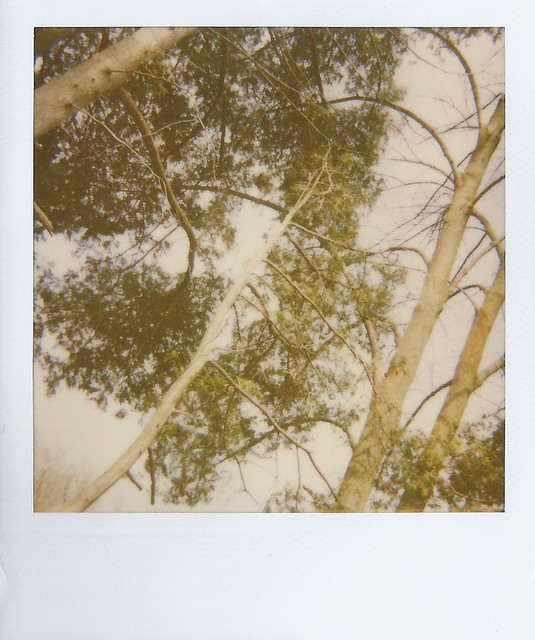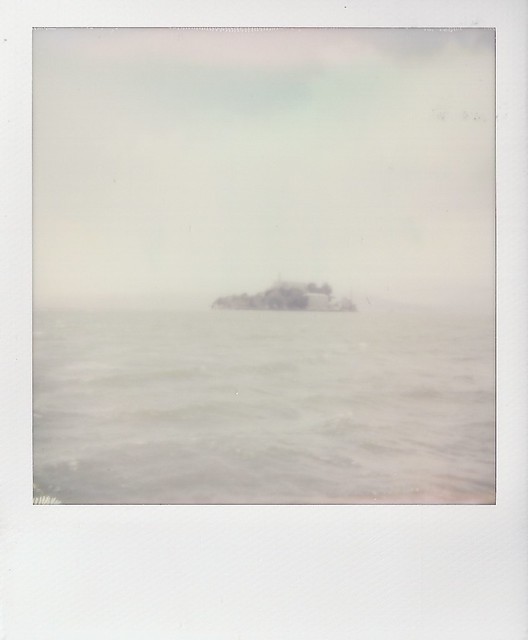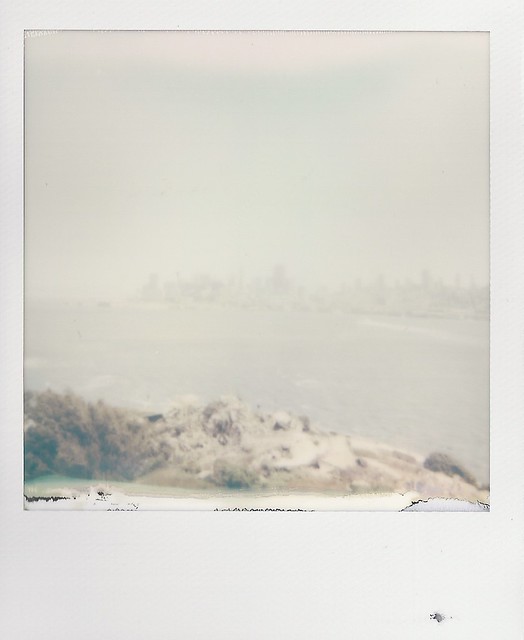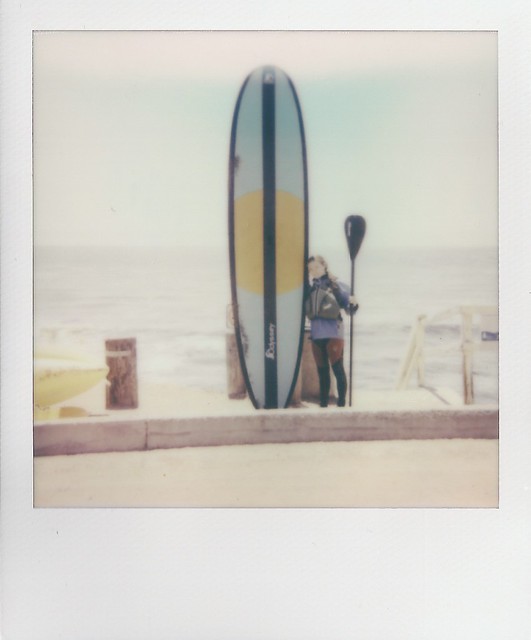Hello! Alas! It has been too long! Between midterms, illness and Florida I have not been able to write in almost a fortnight! (I’ve been reading a lot of 18th-century epistolary British literature lately). So anyway, let’s ditch those first two, eh? Midterms and illness are gross. They are the bane of humanity. And having them both at the same time? Disgusting. Sorry I’m clearly not ditching. Ditching starts… (I feel sick and I do not like school)… NOW.
SO! Florida! Went with the fam for reading week and, before you get jealous, please be aware that it was freezing. To the point where they were fearing for oranges. And thus I was fearing for my orange juice at breakfast. I wouldn’t settle for anything but freshly squeezed (I read something like that in a Judy Blume book and I actually laughed about it for a year). Anyway, remember how I said the cold kind of affected my Polaroids when I was in Germany? Well, it might have been the same situation in Florida… yes, we are back to Polaroids today, continuing my ever-difficult search for the perfect Polaroid🙂
This Christmas, someone gave me the Impossible Project’s (kind of) new Silver Frame B&W film, even though I decided to boycott IP – by the way I’m totally off that. I’M ADDICTED! The good thing about the film: it was free. The bad thing: it’s risky. I mean, silver frames? Kind of declassicifies everything Polaroid. But, the gift-giver said they had nothing else left at the store, so I inserted the pack into the camera as soon as I got to the beach, and I started shooting. Let’s take a look. Prepare to be disappointed. (WHY DO I DO THIS TO MYSELF?)
Most of these photographs are even more frustrating than those in the Germany collection, so I’m not going to write essays on the good and the bad within each because, let’s face it, the good is: they came out of the camera; the bad: they came out of the camera like this. I’m still going to name them though, because that’s fun. Also, I don’t know why my scanner is producing a glare on the left side of the frames – it’s not this way in real life!
Photo #1: Bayshore
This is called bayshore because it was of a sign that said “Bayshore.” Unfortunately the sea swept this one away, along with three of my dollars.
Photo #2: Umbrella in the Mist
Look a little closer… no, even closer… there it is! You see the umbrella! Best used to protect your camera from all the sand flying at it.
Photo #3: Standing and Floating Away
I was really looking forward to a picture of my feet in the sand, but it didn’t happen. It does look sort of cool, but I think it’s too confusing. Rule about Impossible Project film (which will likely not apply to the next 100 pictures because that’s how this works): sand and sea do not show up. Also, shoutout to my sister for taking this picture – I would have taken it of her feet, but her pants were all wrong for the vibe. But really, this picture wasn’t her fault. If anything, she made it what it was. Look at the ones I took. Hmmm. Maybe she should be the one Polaroiding here? Okay, it’s not that good:)
Photo #4: Shoes in the Sky
It’s kind of like Holes (2003). Except these are Havianas, not Clyde “Sweetfeet” Livingston’s runners. Zero was so cute. I wouldn’t have arrested him. But really, I don’t remember it being this windy!
Photo #5: The Fifth and Sixth Ones Ended Up in France
Please see Harris Burdick for an explanation. So you know though, there are two chairs in the sand, in the centre of the picture. They’re those long beach chairs that bend under you and keep your shape for the next person who will always compare their size to yours. This one goes to the lovely beach boy (is that a thing?) who let us borrow a hotel towel for the shot. Man, was the awkward conversation worth it.
WARNING: We are about to see some decent photos, including a few ex.tra.ordinary ones if I do say so myself…
Photo #6: Transportation Options
NOT BAD! Which is the best we can hope for. But really, I like it! The bike rental throws us back to the olden days where Bike Share wasn’t a thing (not complaining, but the US Bike Shares didn’t accept our credit cards so… kind of complaining. Either way, great find here!) Now, while I hated the left side of the photo at first, look closer (the trick to most of these photographs): there’s a car, speeding away! The future is leaving the present to speed back into the past. Dare: figure that out. Love this photo. P.S. Scooters available as well. And they’re the best.
Photo #7: Lifeguard on Duty
Lovely! But. A subpar Polaroid photographer/blogger once said: small font does not show up in Impossible Project photos. She was wrong. Here it is, and it’s the worst thing that any kid could ever read: “Lifeguard on Duty,” followed by all the fun things you can’t do at the beach. Look closer, and read for yourself. Fun sucker. Okay, but I’m not going to get too worked up. I really enjoy this photograph!
Photo #8: The Perfect Septagon
YYEEESSSS! A winner! See, these are the photos that keep me going, keep me coming back to IP and paying obscene prices for film. Strange that while, very often, photos don’t work out because of the sunlight, this one is actually pointed at the sun, and it’s perfect. I just don’t get it. Also see Wayside School, specifically Mrs. Jewls, for an explanation of the title. (What is it with me and YA references today? Specifically works by Lewis Sachar!) Anyway, great photo! Worth the trip to Florida! Actually. That’s why we all went. To get one decent Polaroid. It’s why I get up every morning, really.
So, that’s the end of that collection, of that run through two photos that made me cry, three that dried my tears and three that, darn it, made me start crying again. But really, what does this all mean? Why do I continue to pour my life into these photographs that on average turn out below average?
I think I know why: to not let go of something classic. Polaroids, they were all the rage. They were the way to see a memory as it was happening and the way to instantly forget all the chaos behind the camera. The white frames gave our stories outlines and the matte yellow and perfectly-speckled insides gave our pasts presents again. Polaroids were a completely unique way of storytelling and the truth is, they are gone. I’m thankful for the Impossible Project, I am; it has allowed me to hold onto something even after it left. But I have to say goodbye now. I have to put the idea that Polaroid film will be the same, out of my head. Because it will not be, and it has not been since 2008 when the Polaroid factory shut down. The truth is, I have a choice: I can hold onto my memories of Polaroid film, the ones that I couldn’t capture with photographs because really, how do you take a picture of the film pack from which your photograph is coming, and I can stop Polaroid photography altogether. Or I can adjust, mostly to the idea of constantly adjusting. I can buy less of the expensive IP film and savour the pictures I do take, trying my best to pin down this crazy Impossible Project and to be thankful for every single photo that ejects, regardless of its quality or of the memories I will have of it.
I’m just watching the segment of the Oscars where they go through the artists we lost in the last year. So you’ll probably be able to figure out that that last paragraph isn’t really about Polaroids. Take it as you will,
RJ
P.S. Back to photography for a moment, read a really great letter right here, written to the Impossible Project by a brilliant writer and photographer who lists things that are wrong with the project and also the things that keep us coming back.
